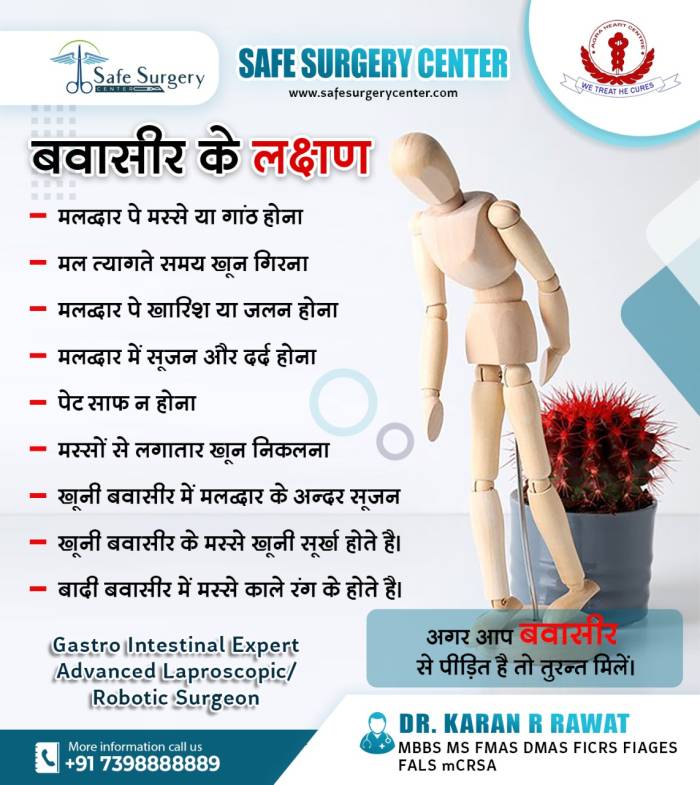
piles
Piles are also called haemorrhoids. Hemorrhoids are masses, clumps, cushions of tissue in the anal canal and are full of blood vessels, support tissue, muscle and elastic fibers. They are classified into two general categories: Internal and External.
Internal Haemorrhoids lie far deep inside the rectum where you can't see or feel them. Due to the pain-sensing nerves in the rectum, they usually do not hurt. However, bleeding is the only sign of their existence.
External Haemorrhoids lie within the anus and are often uncomfortable. If an external haemorrhoid prolapses outside (usually in the course of passing a stool), you can see and feel it.
Piles develop due to chronic constipation that leads to excessive straining, resulting in swelling of veins in the rectal area. Pregnant women may also develop piles due to increased pressure on the veins in the pelvic area.
Physical examination and proctoscopy are done to diagnose piles. In the early stages, piles resolve on their own and do not require any treatment. However, right treatment can significantly reduce the discomfort and itching that many patients experience. The treatment options available are as follows:
- Depending on the diagnosis, the doctor advises whether you require home treatment or further intervention. Lifestyle and dietary modifications such as regular physical exercise, plenty of fluids and a high fibre diet can provide symptomatic relief.
- Surgery: Surgery is used for particularly large piles. Generally, surgery is used when conservative treatment/management is not effective. Sometimes surgery is done on an outpatient basis - the patient goes home after the procedure.
-
Haemorrhoidectomy (open surgery of the piles): In this procedure, the excess tissue that is causing bleeding is surgically removed. It may involve a combination of a local anesthetic and sedation, a spinal anesthetic, or a general anesthetic. This type of surgery is effective in completely removing piles, but can cause pain for few days.
Minimally Invasive Procedure for Hemorrhoids (MIPH): This technique uses stapler for performing surgery. It is relatively painless and be done as a day care surgery.
-
In this procedure, the vessels at the base of hemorrhoids or piles are stapled and divided high up in the anal canal. The external piles get pulled inside. Few of its advantages are:
- Minimal postoperative pain
- Shorter hospital stay
- Quicker recovery and return to normal activities
- Excellent cosmetic outcomes



